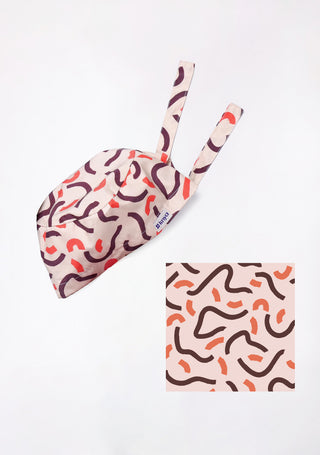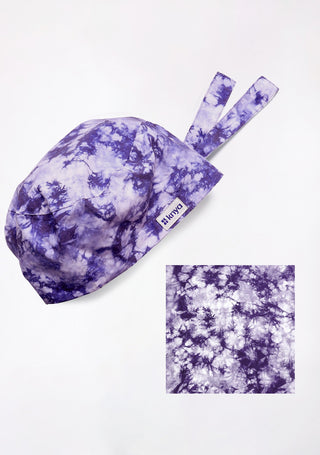Throughout the ages, the iconic nurse cap has represented the spirit of caregiving, dedication, and professionalism within the nursing profession. Although its use has declined in modern healthcare, the nurse cap remains a powerful symbol of the noble tradition of nursing. This blog delves into the fascinating history, evolution, and significance of nurse caps, exploring how they continue to inspire and connect the past and present in healthcare. These headpieces, once a daily part of a nurse's uniform, symbolize not only the profession's growth but also the unwavering commitment to patient care. The cap’s historical significance transcends fashion, marking nurses as trusted healers in a world that values both skill and compassion. While the traditional cap may no longer be part of everyday attire, its legacy lives on in the hearts of those who wear it with pride and those who have witnessed the care and dedication it represents.
Find the best white lab coat here
The Historical Journey of Nurse Caps
Nurse caps trace their origins back to the mid-19th century, heavily influenced by Florence Nightingale, the founder of modern nursing. Nightingale’s contributions during the Crimean War established her as a trailblazer, and her use of uniformity in nursing attire set the foundation for the introduction of caps. These caps not only created a cohesive look among nurses but also served as a visual reminder of their dedication to care and hygiene.
Originally, nurse caps were simple white bonnets, symbolizing purity and the selfless service associated with caregiving. Over time, they became more stylized, reflecting the evolution of nursing as a respected profession. The nurse cap evolved into a badge of honor, signifying the rigorous training and commitment that nurses underwent.
Significance of Nurse Caps in Nursing Tradition
Nurse caps carried a dual purpose: practicality and symbolism. In practical terms, the caps helped maintain hygiene by keeping hair securely in place, reducing the risk of contamination in sterile environments. On a symbolic level, the nurse cap became a hallmark of professionalism and dedication.
Patients and colleagues alike came to associate the nurse cap with trust and competence. For patients, a nurse adorned with this iconic headpiece represented reassurance, care, and expertise. Within the nursing community, the cap fostered unity, acting as a visual emblem of shared values and a sense of camaraderie among professionals.
Types of Nurse Caps Through the Ages
As the nursing profession expanded across the globe, various styles of nurse caps emerged. The traditional starched white cap, often associated with Florence Nightingale’s legacy, became a timeless classic. Other notable variations included the "mob cap," which featured a rounded shape and softer structure, offering a more relaxed aesthetic while maintaining professionalism.
Regional adaptations also played a role in shaping nurse caps. For example, in Germany, nurses often wore colorful caps adorned with ribbons to signify their rank or specialty. In contrast, American nurse caps emphasized simplicity and uniformity, featuring minimal embellishments but maintaining their unmistakable identity.
Check out Navy Blue Scrubs for Mens
The Decline of Nurse Caps
By the mid-20th century, nurse caps began to wane in popularity. The shift toward modern uniforms, such as medical scrubs, offered increased comfort and practicality for nurses working long shifts. Additionally, concerns over hygiene and the cumbersome nature of caps led to their gradual disappearance from daily use.
However, their decline did not diminish their legacy. Nurse caps remain an enduring emblem of the profession’s rich history, celebrated during nursing graduation ceremonies and other formal occasions. For many, they are treasured keepsakes that evoke pride and nostalgia.
Modern-Day Significance of Nurse Caps
While nurse caps are no longer a staple in everyday healthcare settings, their symbolism remains alive. They represent the foundational values of nursing: compassion, professionalism, and unwavering dedication to patient care.
In contemporary nursing, the spirit of the cap is often carried forward in other ways, such as the use of polished uniforms like lab coats and medical scrubs.
Conclusion
The nurse cap is more than just a piece of headwear; it is a timeless symbol of nursing tradition, professionalism, and commitment to care. While its presence in daily practice has diminished, its legacy endures in the hearts and minds of nurses and patients alike.
Today, modern uniforms such as medical scrubs and lab coats carry forward the same values that nurse caps once represented. If you’re interested in learning more about the fabrics used in medical scrubs, read our blog, Why are Scrubs Not Made from Cotton?.
Nurse caps may no longer be a common sight in hospitals, but their story remains an essential part of nursing history—a reminder of the compassion and professionalism that define this noble profession.












